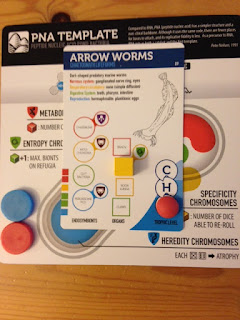Technically, the first book in the series Harry Potter and the Philosopher’s Stone
was published in late June of 1997, so this post might be a month late. So I’m posting
my reflections to coincide with Harry Potter’s birthday!
To celebrate the 20th anniversary of the books,
the National Library of Medicine (NLM) featured an exhibition titled Harry Potter’s World: Renaissance, Science,
Magic and Medicine. There were two lectures at NLM on June 27 and June 29
celebrating the occasion. The first one that focused on fandom I found less
interesting even though I was less knowledgeable about this area. (I did learn
about “wrock” music.) The second one by Stephen Greenberg titled Monsters in the Stacks was excellent,
and I recommend it (archived here). Greenberg is an engaging and
humorous speaker, and it was fun to see pictures of rare books related to the
Harry Potter world.
While I was familiar with a number of the connections to
alchemy mentioned by Greenberg including references to Paracelsus and others, I
learned a number of new interesting factoids. In a sound-bite both funny and
sad, Greenberg offhandedly said “What is alchemy anyway? It’s chemistry that
doesn’t work.” Technically, that’s not true. The alchemists helped to invent
and refine many experimental chemistry laboratory techniques. In the Q&A,
someone who was amused by Greenberg’s wisecrack about non-working-chemistry
commented that this made her an alchemist because “I practiced it when I took
chemistry in college.” It just goes to show how much more work we need to do as
teachers of chemistry.
Listening to Greenberg (who specializes in rare books) made
me want to visit NLM. Incidentally I will be going to DC in late August for the
American Chemical Society (ACS) national conference. I wasn’t originally
planning to attend the Fall meeting since I took a bunch of students to the Spring
meeting in San Francisco back in April, but I was invited to give a talk in a
symposium of interest to me. I’ve only been to DC once for the Fall ACS
conference back in 2009. The highlight of my time in DC was the Smithsonian
mineral gallery, and hopefully I can find time for a return visit. Incidentally
the ACS logo contains an alembic (a distillation apparatus) – Greenberg showed
one of these from a page in one of the old books. His explanation of how these
books were made and printed was fascinating.
But what have the Harry Potter books done for me the last
twenty years? I think they helped spark my interest in the history of
chemistry, and finding out more about the alchemists in particular. (This is an excellent book about the history of alchemy.) It also got me interested
in the history of medieval monsters and beasts, now commercialized in an
unprecedented way with Fantastic Beasts, a Harry Potter spin-off. By situating Harry Potter in contemporary
England but connecting it to a medieval literary past, Rowling’s books helped
spark a curiosity in historical areas I didn’t know much about. Interestingly
Tolkien, my most-read author, didn’t spark similar interests possibly because Middle
Earth and its predecessors were situated in a different realm. I also read
Tolkien when I was much younger, before I knew I was interested in history,
chemistry, science and philosophy. Reading Rowling’s books as an adult and
academic has given me different touchstones.
Harry Potter helped start this blog when I was casting about
for a theme. Ensconced in education, the prominent role of Hogwarts provided me
with many things to think about related to education. While I don’t think
Hogwarts provides an ideal education by any means, it does raise interesting
questions about the role of theory and hands-on practice, different teaching
styles, what’s important in an education, and how/why one gets admitted into a
school in the first place. Education can be magical. But not all magical
education turns out that way. Besides broader educational issues, I’ve also
enjoyed thinking about the theory of magic and what a Potions class might
resemble, through this blog. While Harry Potter related blog posts have
decreased over time, I’ve kept up with writing about things of interest to me –
and I see that as a good thing!
Happy Birthday, Harry Potter!









